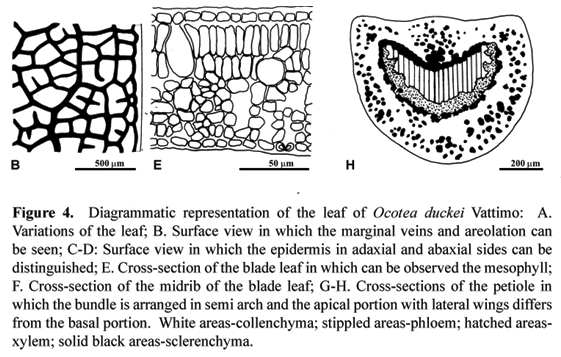Ocotea duckei Vattimo is a plant native of Northeastern Brazil and popularly know as "Louro-de-cheiro". It is rich in alkaloids, lignans and essential oils. One of the most important constituents found in Ocotea duckei is yangambin, a furofuran lignan having significant pharmacological activities: as platelet activating factor (PAF) receptor antagonist, protective against cardiovascular collapse and anaphylactic shock, anti-allergic, analgesic, anti-convulsivant and as depressant of central nervous system. A morphoanatomical study of the leaves of O. duckei was carried out in order to contribute to separate its from the other species of the genus Ocotea, which would be helpful in its identification. The morphological study was done with stereomicroscope and by field observations. The anatomical studies were made by paradermic and transversal sections of leaves (blade and petiole), cleared and stained with Astrablue and basic Fuchsine. The leaves are alternate, leathery, elliptic to oblong, glabrous, acute to acuminate at the apex, and acute and lightly attenuate at the base. The main anatomical features are the epidermis unistratified, the hypostomatic leaves with stomata of the paracytic type, mesophyll is dorsiventral with secretories cells in the parenchyma and collateral vascular bundles.
Ocotea duckei; Lauraceae; morphoanatomy; Brazilian plant








